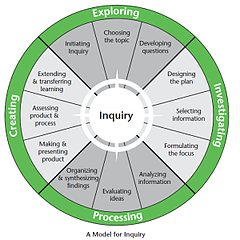This post, by educator Michael Grover, appeared originally on our sister blog, Facing Canada.
I was recently very fortunate to be invited to join a trial Universal Declaration of Human Rights (UDHR) Glogster project with Facing History (see samples of student work). The purpose of the project was to have students complete a project about the Universal Declaration of Human Rights using Glogster. In this project, we, the teachers, were given tutorials in the application of Glogster.
Glogster 101: What does it do?
Glogster is a Web 2.0 resource that allows students to create digital posters that they can share online by creating a page on Glogster’s site (the student simply hit ‘Publish’ when they are done and a URL is created that leads to their poster), or, if they are keen, can be embedded in other sites (see examples below). Beyond text, the poster, or ‘Glog’, Glogster allows students to easily embed images (using Google Images) and videos (from YouTube). Students can also attach other content (e.g. Microsoft Office documents), such as an Open Letter or a works cited list, to their Glog, making it a multidimensional project if you so desire. From these tutorials I developed the confidence to instruct students in making their own Glogs. See the attached guides to scaffold the process of creating a student account and the basic production functions of creating a Glog.
*TDSB teachers have access to Glogster through their school library (see virtual space). Just ask your librarian for the instructions.
From the Exploration of Historical Documents, to Synthesis and the Creation of a Glog
In the classroom, my students followed the inquiry process. Glogster was used at the ‘Creation’ stage of the Inquiry Process (see OLSA, Together for Learning, 23-24). Before arriving there with my applied level students, we began with an exploration of the nature and context of the UDHR, making connections between its development and that of the parallel development of the Convention on Genocide (see attached). From there students were guided through the investigation process, gathering documents online related to the subject. As they gathered sources, they analyzed and evaluated the information they found (see for primary sources and secondary sources). Having gathered and begun processing a variety of documents, the students then transformed the documents at the creation stage using Glogster. The capacity to simply drag and drop images and videos into the Glog is a wonderful way to demonstrate to students the Historical process. Students can take historical documents (both primary and secondary sources) that individually have limited instrumental value and synthesize them to create something that has intrinsic value (such as a story or thesis, from which they can create a message) using Glogster.
Scaffolding the Learning
When students were prepared to begin creating their Glogs (they worked with a partner through the process), I demonstrated Glogster to them by walking them through the process on the projector while students followed on netbooks. They were further provided walk-through guides and handouts on how to create a Glog to further scaffold their understanding of the tool. I found it took about 60 minutes of play and exploration for students to begin to develop a relative comfort level using the tool.
Students Link Current Events to the UDHR
Comfortable with the tool and prepared to create their Glogs, students were given about two hours in class to create a Glog to demonstrate their understanding of how the UDHR could be used as a legal tool to challenge Crimes Against Humanity. They researched a human rights violation and gathered information and documents to that end, and related the violation to the guaranteed protections listed in the UDHR (see assignment handout).
The following are some examples of their product: Human Rights Violations: Somalia; Democratic Republic of Congo; The War in Darfur; Syria.
Once created, the students shared their Glogs (there is a presentation mode in Glogster) with the class and were encouraged to further share their projects with their peers online by embedding them in Facebook (as they are embedded here).


